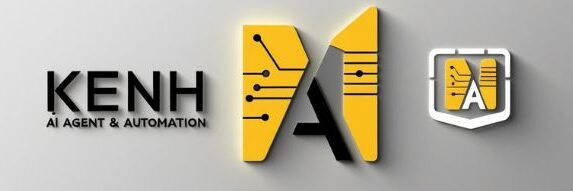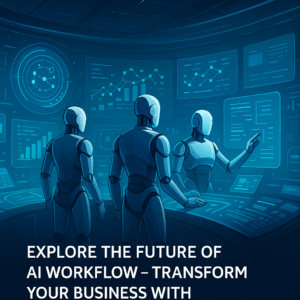Best Practices for Managing AI Agents in Your Team
Meta Description: Discover how to effectively manage AI agents in your team using automated workflows, the MCP framework, and tools like Claude AI, GPT-4.5, and AutoGPT. Enhance productivity and scale your operations with ease.
The Rise of AI Agents in Modern Teams
AI is no longer just a buzzword—it’s a practical, scalable solution that is redefining the way teams operate. At the heart of this revolution are AI Agents: intelligent, autonomous digital workers that execute tasks, make decisions, and collaborate across workflows.
Whether you’re running a startup, leading a marketing department, or managing a product team, learning how to deploy and manage AI agents effectively is the key to thriving in today’s fast-paced digital environment.
What Exactly Are AI Agents?
An AI Agent is a software entity powered by artificial intelligence designed to perform specific tasks, often autonomously. Unlike traditional bots, AI agents have:
-
Contextual understanding
-
Goal-oriented behavior
-
Adaptability and reasoning
-
Collaborative capabilities
From writing content to analyzing data, managing email workflows to designing landing pages—AI agents like Claude AI, GPT-4.5, and AutoGPT are revolutionizing task execution.
Workflow Automation – Your Invisible Team
Adding AI agents to your team is only effective if they are embedded within a structured AI workflow. Think of workflow automation as the operating system for your AI workforce.
Why You Need an AI Workflow
Without proper workflows:
-
Agents overlap in function
-
Tasks become redundant or lost
-
Human-AI coordination suffers
With an optimized AI Workflow, you get:
-
Seamless task hand-offs between agents
-
Real-time adaptability to new input
-
Streamlined communication between AI and human team members
MCP Framework – The Blueprint for Agent Collaboration
At the core of AI agent orchestration is the MCP (Multi-agent Collaborative Process) framework. MCP ensures that every agent in your team:
-
Knows its role
-
Understands its dependencies
-
Operates within a clear hierarchy
MCP in Practice
Imagine building a product landing page:
-
Claude AI defines the tone and user personas
-
GPT-4.5 writes copy and SEO elements
-
AutoGPT structures the layout and pushes to Webflow
MCP enables these agents to:
-
Work in sequence
-
Handle feedback loops
-
Avoid conflicting actions
This turns your AI system into an autonomous but coordinated team.
Best Practices for Managing AI Agents
1. Assign Clear Roles and Responsibilities
Just like human teams, AI agents need structure. Clarify:
-
What task each agent handles
-
What data or input they require
-
Who monitors their outputs
Example:
-
GPT-4.5 = Content generation
-
Claude AI = Review & strategy
-
AutoGPT = Execution & deployment
2. Use Standardized Prompts
AI agents thrive on prompt clarity. Use a shared prompt format across agents to ensure consistency.
Template Prompt Structure:
-
Objective:
-
Constraints:
-
Tone:
-
Target Audience:
-
Output Format:
This structure helps agents better understand your intent and produce quality outputs.
3. Set Review and Feedback Loops
Even the best AI agents make mistakes. Build checkpoints in your workflow:
-
Claude AI reviews GPT-4.5 outputs
-
You validate designs generated by AutoGPT
-
Automated error detection flags issues
You can even assign Meta Agents that evaluate outputs and route tasks accordingly.
4. Combine Human + AI Oversight
Don’t treat AI agents as black boxes. Use “human-in-the-loop” systems to:
-
Guide creative direction
-
Handle edge cases
-
Make ethical or brand-sensitive decisions
The best AI-led teams are AI-augmented, not AI-only.
5. Maintain a “Knowledge Hub” for AI Agents
Use tools like Notion or internal wikis to:
-
Document workflows
-
Store brand guidelines
-
Archive prompts and output examples
When agents are updated or replaced, this ensures continuity and speed in onboarding the next system.
6. Audit Agent Performance Regularly
Use KPIs for each AI agent:
-
Claude AI: Brand alignment score
-
GPT-4.5: Engagement metrics on content
-
AutoGPT: Deployment accuracy or error rates
Track performance weekly and retrain prompts or swap agents as needed.
Top Tools for AI Agent Management
Managing agents isn’t just about prompts—it’s about using the right infrastructure. Here are the three standout tools:
Claude AI – The Strategic Thinker
Claude excels at high-level reasoning, strategy formulation, and content review. Use Claude to:
-
Build content frameworks
-
Create marketing personas
-
Provide feedback on creative work
Claude plays well in editor-in-chief or project strategist roles.
GPT-4.5 – The Content and Idea Engine
From emails and scripts to reports and blogs, GPT-4.5 is ideal for:
-
Creative generation
-
Technical explanations
-
SEO content planning
With the right prompts, GPT-4.5 becomes your content marketing powerhouse.
AutoGPT – The Workflow Brain
AutoGPT coordinates everything:
-
Connects agents
-
Executes multi-step tasks
-
Interfaces with tools like Notion, Zapier, or Slack
-
Deploys updates to websites or systems
AutoGPT acts like an AI operations manager, ensuring every agent plays their part in harmony.
A Real-World Case Study: AI Agents in a Marketing Team
Let’s take Breeze Digital, a small marketing agency.
They used:
-
Claude AI for client brief understanding
-
GPT-4.5 to write email sequences
-
AutoGPT to post content on WordPress & generate thumbnails
Outcome:
-
Reduced project time by 70%
-
Doubled client capacity
-
Standardized outputs with fewer errors
Result? A leaner, smarter team—without hiring more humans.
Common Pitfalls (And How to Avoid Them)
Even experienced teams make these mistakes:
❌ Too Many Agents, Not Enough Control
Fix: Stick to essential agents and define clear roles
❌ Vague Prompts
Fix: Use templates and training docs
❌ No Feedback System
Fix: Automate QA with looped review agents or human sign-off
❌ Relying Only on One Model
Fix: Mix Claude’s reasoning with GPT’s creativity and AutoGPT’s coordination
Scaling with AI Agents – What’s Next?
Managing AI agents is just the beginning. What’s next?
-
Self-optimizing agents using reinforcement learning
-
Cross-company agent collaboration (think: AI Slack teams)
-
Voice-activated workflows
-
Marketplace of AI workers you can hire like freelancers
The future team isn’t just remote—it’s automated, optimized, and intelligent.
FAQs – Managing AI Agents in Your Team
Q: How many AI agents should I start with?
A: Start small: 2–3 agents. One for content, one for review, one for automation.
Q: Do I need a developer to manage AutoGPT?
A: Some setup is technical, but many wrappers like AgentHub and AutoGen simplify the process.
Q: Can AI agents work together in real time?
A: Yes—with tools like AutoGPT or LangChain, agents can be orchestrated in synchronous or asynchronous workflows.
Don’t Manage Harder. Manage Smarter—with AI Agents.
If your team is stretched thin, drowning in repetitive tasks, or constantly context-switching, it’s time to explore the power of AI agents.
With smart management practices, the MCP framework, and the right tools, your AI agents can become your most productive teammates.
📢Upgrade Your Team with Smart AI Agents
Ready to put Claude AI, GPT-4.5, and AutoGPT to work for your business?
Start building smarter workflows, faster outputs, and intelligent automation today.
👉 Discover MagicLight AI Tools Now
✅ Automate content
✅ Scale workflows
✅ Empower your team with AI

